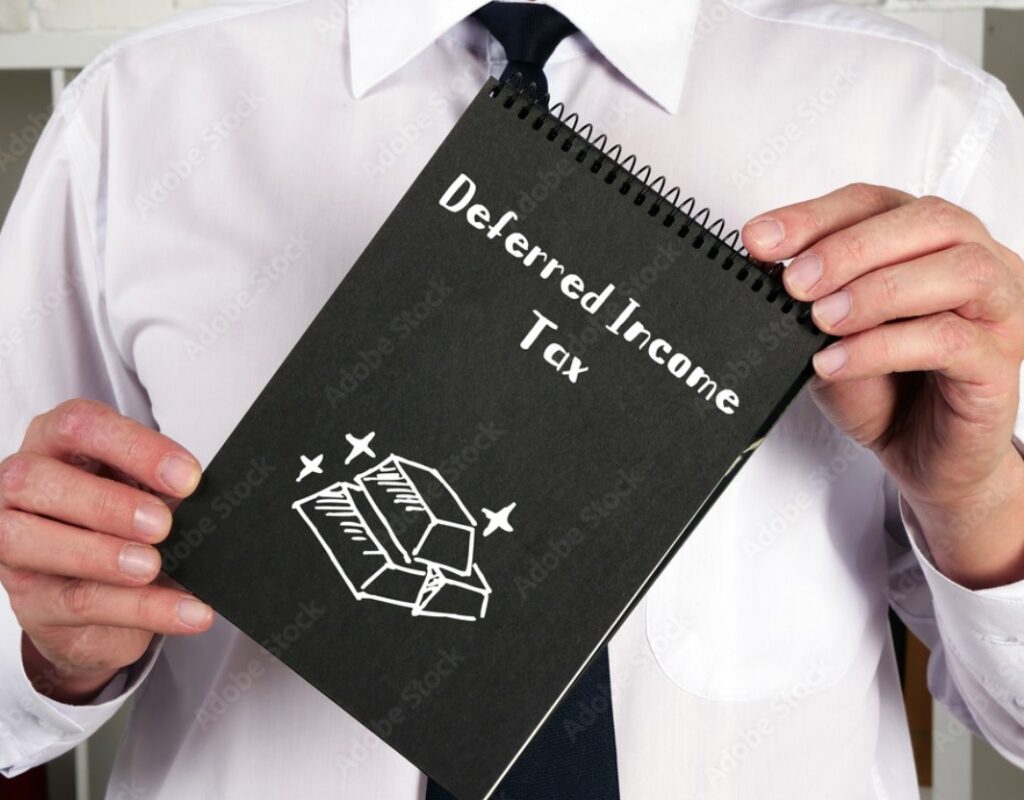Tax planning is a strategy used by individuals and businesses to reduce their tax liability by taking advantage of deductions, credits, and other tax breaks offered by the government. It is an important part of financial planning, as it can help you make the most out of your tax returns and make sure you are not overpaying. This article, “Maximizing Your Tax Returns: Tips and Tricks for Tax Planning”, will provide helpful advice on how to maximize your tax returns by understanding the different tax breaks available and making the most of them.
The first step in tax planning is to understand the basics of taxation. It is important to be familiar with the different types of taxes, such as income tax, property tax, and sales tax. Knowing the differences between them and how they apply to your situation can help you make well-informed decisions about when and how to file your taxes. The article will also provide strategies on how to maximize the deductions and credits available to reduce your taxes. Finally, the article will discuss how to keep track of your tax returns throughout the year to make sure that you are always making the most out of them.
By following the tips and tricks outlined in this article, you can ensure that you are getting the most out of your tax returns and maximizing your savings.

Different types of taxes
Tax Brackets and Rates:
Tax brackets are the income ranges to which a particular tax rate applies. For example, the US federal government has seven tax brackets and each one is associated with a different rate of taxation. Tax rates vary from 0% to 37%, depending on the bracket and the taxpayer’s filing status. The tax rates also vary from state to state, with some states having no income tax at all.
Tax Deductions and Credits:
Tax deductions and credits are reductions in a taxpayer’s income tax liability. Tax deductions reduce the amount of taxable income, while tax credits reduce the amount of taxes owed. Tax deductions and credits can be used to lower a taxpayer’s tax liability and can include deductions for things like home mortgage interest, charitable donations, and state income taxes.
Tax Planning Strategies:
Tax planning is the process of arranging one’s financial affairs to minimize the amount of taxes owed. This can involve strategies such as tax deductions, credits, and deferring income. Tax planning can also involve utilizing tax-advantaged investment accounts, such as IRAs and 401(k)s, to reduce the overall tax burden. Additionally, tax planning can involve structuring business transactions to take advantage of tax credits and other tax incentives.

Deferring income
Maximizing Deductions:
Deferring income can be an effective way to maximize your deductions. This strategy allows you to defer your taxable income until a later tax year, thus decreasing your taxable income in the current year. This can be achieved through retirement savings accounts such as 401(k)s and IRAs, as well as other strategies such as delaying bonus payments or taking advantage of tax-free investment opportunities.
Utilizing Tax-Advantaged Accounts:
Tax-advantaged accounts, such as 401(k)s and IRAs, can also be used to defer income. These accounts allow you to put money away on a tax-deferred basis, allowing you to postpone paying taxes on the income until it is withdrawn. As an added benefit, these accounts may also provide you with a tax deduction in the current year.
Taking Advantage of Tax Credits:
Another way to defer income is to take advantage of tax credits. Tax credits are available for a wide range of activities, including education, energy efficiency, and charitable giving. These credits can reduce your taxable income in the current year, allowing you to defer more income until a later tax year.
Planning for Capital Gains and Losses:
Deferring income can also be a good strategy for planning for capital gains and losses. By deferring income, you can delay the payment of capital gains taxes until a later tax year. This can be beneficial if you expect to have large capital gains in the current year, as you can defer the payment of those taxes until a later tax year.
Preparing for Tax Season
Organizing documents and receipts:
It is important to get organized and have all your tax documents ready for the upcoming tax season. Collect all your receipts, bank statements, and other documents that are related to your taxes. Take the time to organize and review all of your documents so that you can easily find the information you need when filing your taxes.
Knowing important tax deadlines:
Make sure to stay on top of all the important tax deadlines throughout the year. Make sure you are aware of when the filing deadline is, as well as any other important dates related to filing your taxes. Missing the deadline could lead to costly penalties, so it is important to mark the dates on your calendar.
Hiring a tax professional:
Depending on the complexity of your taxes, you may want to consider hiring a tax professional to help you. Tax professionals are knowledgeable about the tax system, and can help you maximize your deductions and make sure you are in compliance with the law.

Filing electronically:
Filing your taxes electronically is the fastest and most accurate way to get your taxes done. You can e-file your taxes using a variety of online services, or you can work with a tax professional who can do it for you. Filing electronically also speeds up the process of getting your refund.
Tax Planning for Business Owners
Choosing the Right Business Structure:
It is essential for business owners to consider the different business structures available, such as sole proprietorship, partnership, limited liability company, and corporation in order to choose the best one for their business. Each structure has its own advantages and disadvantages, and it is important to consider the tax implications of each structure before making a decision. A business owner should consider the legal, financial, and tax implications of each structure before making a decision.
Managing Cash Flow:
Proper cash flow management can help business owners save money on taxes. Business owners should understand their cash flow and use it to their advantage when it comes to tax planning. This includes understanding their tax liability and taking advantage of deductions and credits that can help reduce their tax burden. Business owners should also plan ahead to ensure they have enough money to pay their taxes on time.
Claiming Deductions and Credits:
There are a variety of deductions and credits available to business owners that can help reduce their tax liability. Business owners should understand the deductions and credits that are available to them and take advantage of them in order to legally reduce their tax burden. They should also keep accurate records of their expenses and deductions in order to ensure they are able to take advantage of all the deductions and credits that are available to them.
Paying Estimated Taxes:
Business owners are required to pay estimated taxes on a quarterly basis. It is important for business owners to understand their estimated tax liability and plan ahead in order to ensure they have enough money to pay their taxes on time. Business owners should also review their estimated tax liability on a regular basis in order to ensure they are not overpaying or underpaying their taxes.
Tax Planning for Investments
Understanding the Tax Implications of Different Types of Investments
Investing carries a variety of tax implications, so it is important to understand how each type of investment works from a tax perspective. Stocks, bonds, mutual funds, exchange-traded funds (ETFs), and real estate can all be subject to different types of taxes. Long-term capital gains, short-term capital gains, and dividend taxes are all potential outcomes when investing. It is also important to understand the differences between taxable and tax-deferred accounts, such as traditional IRA and Roth IRA. Understanding the different tax implications of different investments is essential for any investor looking to maximize their tax efficiency.
Maximizing Tax-Efficient Investments
Maximizing tax-efficiency when investing involves a combination of strategic planning and research. For example, when investing in stocks, investors should consider investing in stocks with lower dividend yields, as these are typically taxed at a lower rate than stocks with higher dividend yields. Additionally, investors should research the tax implications of different investments before making a decision. For example, real estate investments are often subject to property taxes, so investors should be aware of this before investing in real estate.
Managing Taxable and Tax-Deferred Accounts
Managing taxable and tax-deferred accounts is an important part of tax planning for investments. Taxable accounts are subject to income taxes, while tax-deferred accounts are not. For example, traditional IRA and Roth IRA are both tax-deferred accounts. When investing in either a taxable or tax-deferred account, investors should consider how their investments will be taxed in the future. Additionally, investors should consider how their investments will be taxed in the present, as investments made in a taxable account can result in higher taxes in the present. Finally, investors should also consider the benefits of tax-deferred accounts, such as the ability to invest in higher-risk investments without incurring immediate taxes.

Tax Planning for Retirement
Maximizing Contributions to Retirement Accounts:
Retirement planning requires careful consideration of tax implications. One of the most important tax strategies for retirement is to maximize contributions to retirement accounts. This means taking advantage of pre-tax and after-tax retirement accounts such as traditional and Roth IRAs, 401(k)s and pensions. Additionally, contributing to a health savings account (HSA) and/or a 529 college savings plan can also help to lower taxable income and reduce taxes. Knowing which accounts to use and when to contribute can help to maximize tax savings.
Understanding Required Minimum Distributions:
Retirement planning also involves understanding and complying with regulations regarding required minimum distributions (RMDs). RMDs are the amount that must be withdrawn from retirement accounts each year, beginning at age 70 and ½. If RMDs are not taken, there are steep penalties. Knowing the rules and regulations regarding RMDs is important for retirement planning as it can help to minimize the tax burden.
Choosing the Right Retirement Income Strategy:
Choosing the right retirement income strategy is key to successful retirement planning. This includes understanding how Social Security, pensions, annuities, investments, and other income sources will be taxed. Additionally, retirement planning may involve strategies such as tax-loss harvesting, Roth conversions, and asset location. Knowing how to structure a retirement income plan can help to lower taxes and maximize income during retirement.
Common Tax Mistakes to Avoid
Overlooking Deductions and Credits:
One of the most common tax mistakes is overlooking deductions and credits that can potentially reduce the amount of taxes that are owed. This includes deductions for charitable donations, business expenses, and other items that can be used to reduce tax liability. Additionally, credits such as the Earned Income Credit, the Child Tax Credit, and the American Opportunity Credit can be claimed to help reduce tax liability. It is important to research and understand all of the deductions and credits that may be available in order to lower total tax liability.
Failing to Report All Income:
It is important to report all income that is earned during the tax year, regardless of whether it is from a job, investments, or other sources. Failing to report income can result in penalties, interest, and other consequences. Additionally, taking advantage of deductions and credits may require reporting of income from other sources.

Ignoring State and Local Taxes:
Depending on where a person lives, state and local taxes may be applicable. Not paying these taxes can result in additional penalties, interest, and other consequences. It is important to research and understand which taxes may be applicable in the state and locality that the person resides in.
Filing Late or Not at All:
It is important to file taxes by the applicable deadline in order to avoid penalties and interest. Additionally, if taxes are not filed at all, then it is possible to incur additional penalties, interest, and other consequences. It is important to make sure that taxes are filed on time in order to avoid these potential consequences.
Conclusion
To conclude, maximizing your tax returns is possible with the right tips and tricks for tax planning. Tax planning is an essential part of financial planning and can help you save money on your taxes and ensure that you receive all the deductions you’re entitled to. The key to tax planning is to be aware of the deductions and credits you’re eligible for, as well as what documents you need to file and when. By staying organized and tracking your expenses, you’ll be able to prepare accurate tax returns and maximize your tax returns. Additionally, taking advantage of tax-advantaged accounts, such as IRAs, 401(k)s, and HSAs, can help you save money on taxes and reach your financial goals. Finally, it’s important to seek the help of a qualified tax professional if you need help with your tax planning and filing. With the right knowledge and tools, you’ll be able to maximize your tax returns and save money while doing your taxes.
FAQ – Tax returns
1. What are the best tips for maximizing my tax return?
To maximize your tax return, make sure to take advantage of all available deductions and credits. Additionally, consider making retirement contributions, such as a traditional or Roth IRA, to reduce your taxable income.
2. How can I reduce my taxable income?
To reduce your taxable income, you can take advantage of deductions, such as the standard deduction or itemized deductions, and credits, such as the earned income credit. You can also lower your taxable income by making retirement contributions to a traditional or Roth IRA.
3. What are the different types of deductions I can take?
The two most common types of deductions are the standard deduction and itemized deductions. The standard deduction is a fixed amount that you can deduct from your taxable income. Itemized deductions are more specific and include deductions for certain expenses, such as medical costs, state and local taxes, and charitable contributions.
4. What is the difference between a traditional and Roth IRA?
A traditional IRA allows you to make pre-tax contributions, reducing your taxable income in the year you make the contribution. A Roth IRA requires you to make post-tax contributions, but your withdrawals during retirement are tax-free.
5. What is the earned income credit?
The earned income credit is a refundable tax credit for low- and moderate-income individuals and families who have earned income. The amount of the credit is based on your income and the number of dependents you have.
6. What is the best way to keep track of my deductions?
The best way to keep track of your deductions is to create a spreadsheet or use a tax software program. Make sure to keep track of any receipts, invoices, or other documents related to your deductions. Additionally, make sure to save any tax forms you receive from employers or other sources.
7. Are there any other tax credits I should be aware of?
In addition to the earned income credit, there are a number of other tax credits available. These include the child tax credit, the American opportunity credit, the saver’s credit, and the retirement savings contributions credit.
8. How can I estimate my tax refund?
To estimate your tax refund, use the IRS withholding calculator or a tax software program. Enter your income and deductions to get an estimate of your refund.
9. What is the best time of year to do tax planning?
Tax planning should be done throughout the year. However, the best time to do tax planning is during the fall, when you can take advantage of tax-saving strategies before the end of the year.
10. How can I save money on my taxes?
To save money on your taxes, make sure to take advantage of all available deductions and credits. Additionally, consider making retirement contributions, such as a traditional or Roth IRA, to reduce your taxable income.
